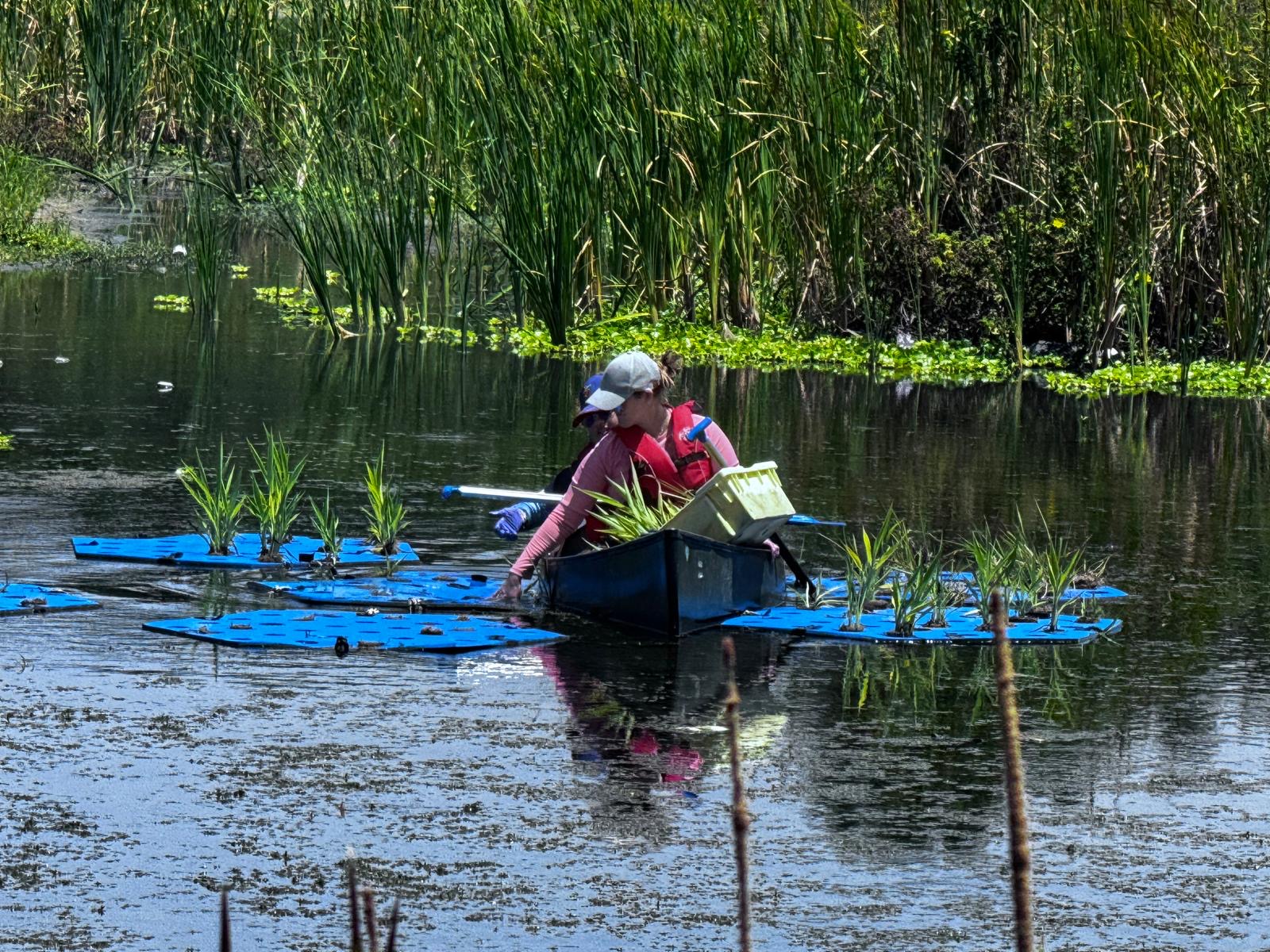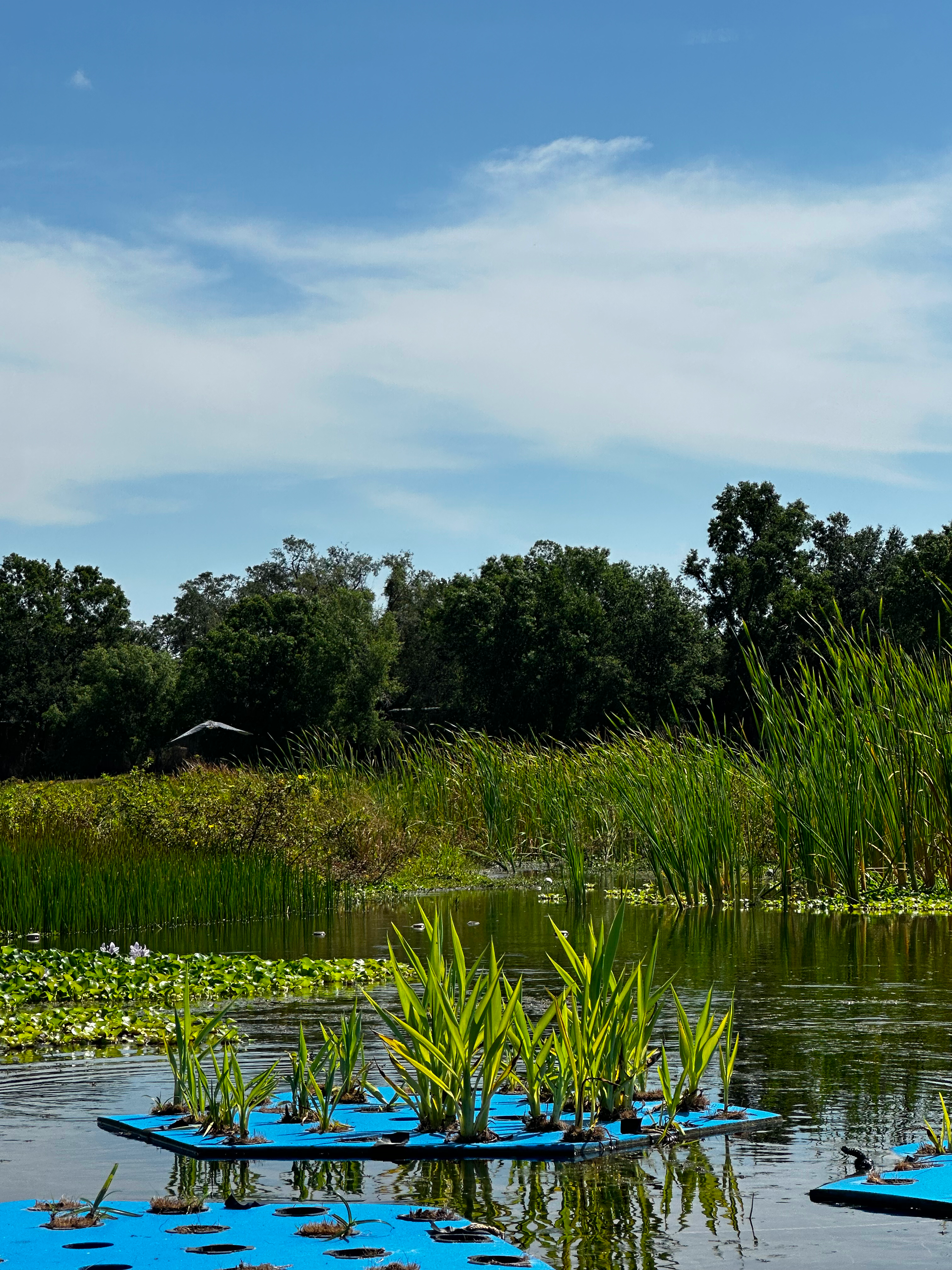Floating Wetlands
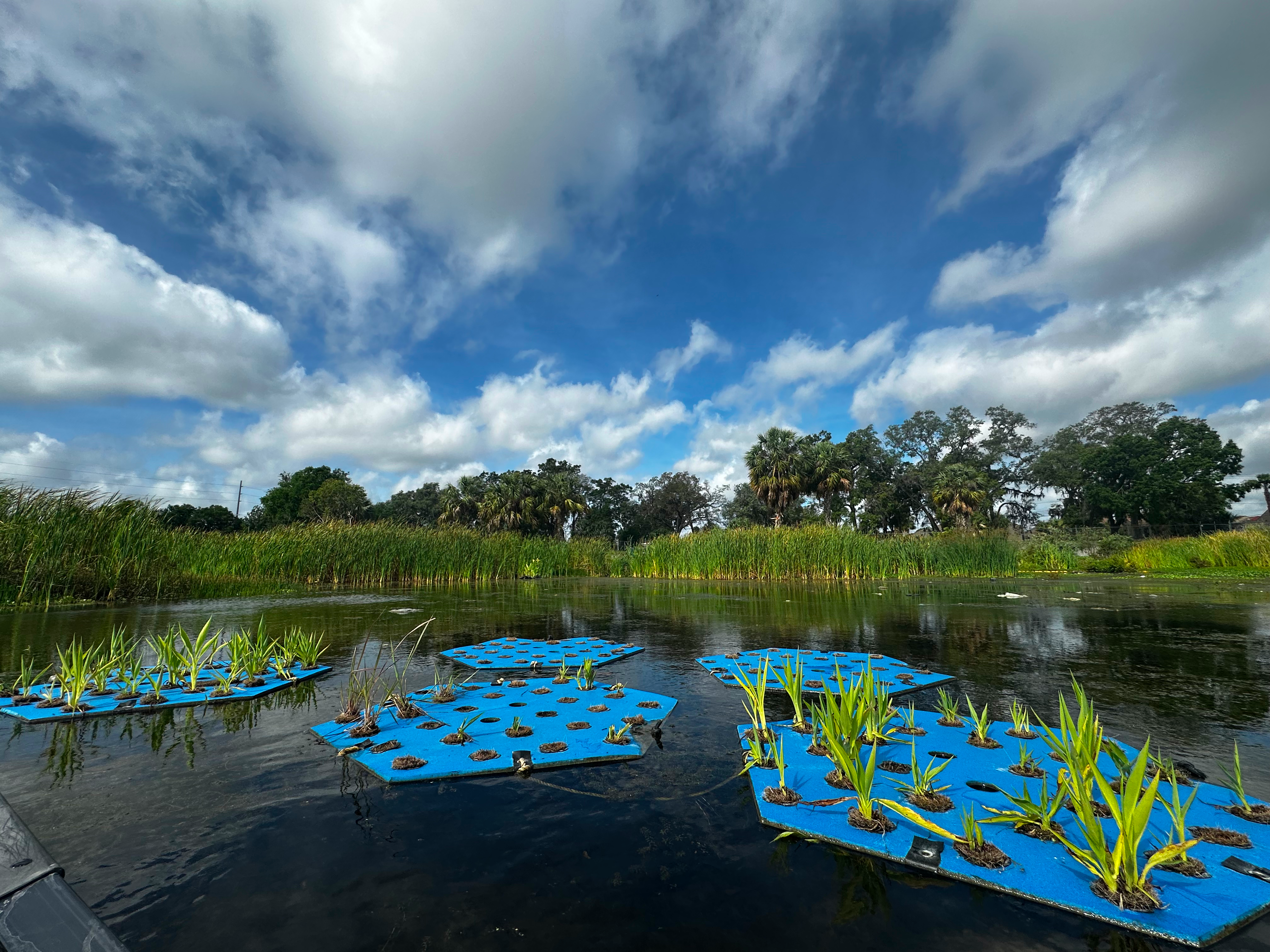
What Is a Floating Wetland System?
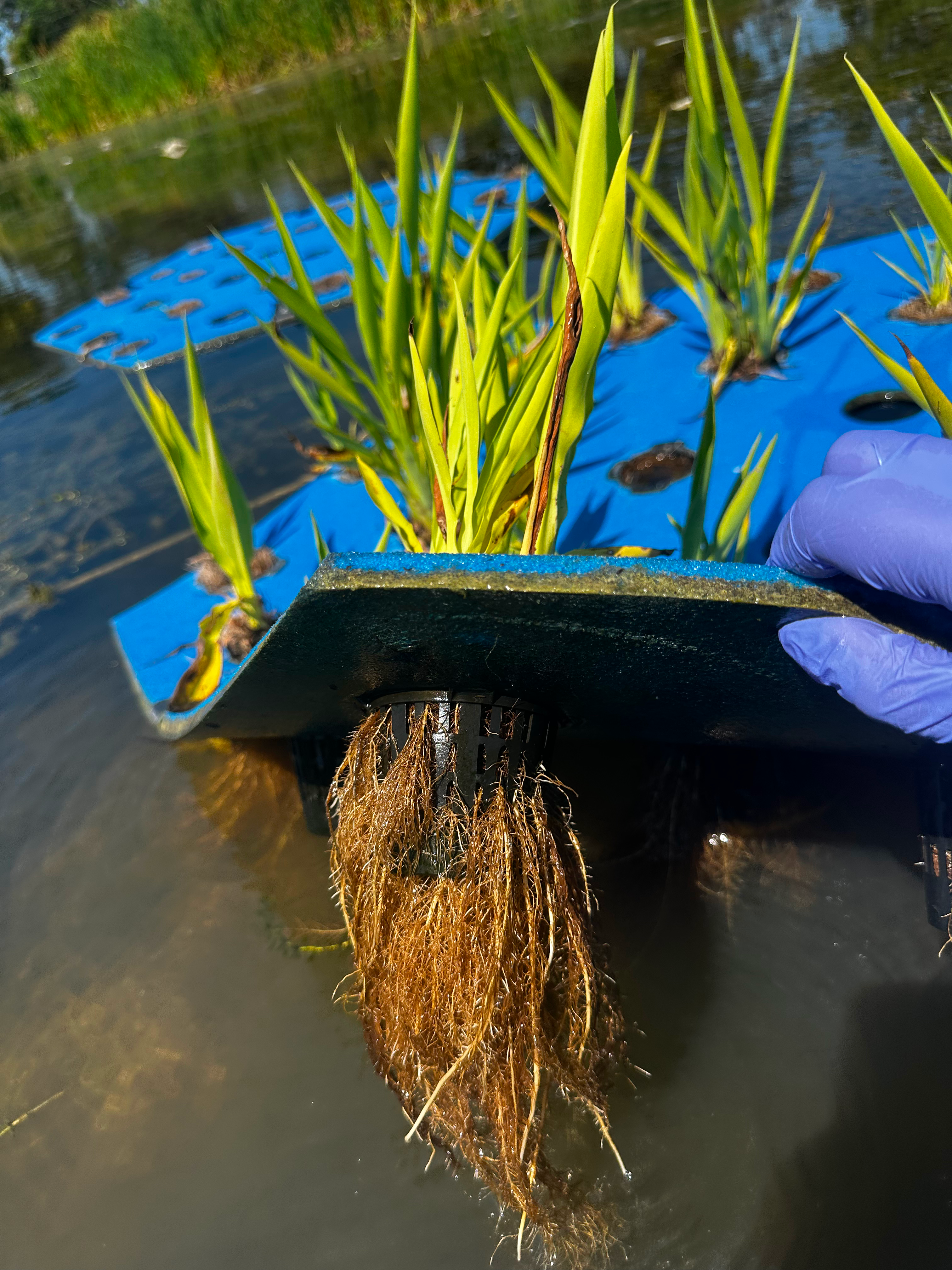
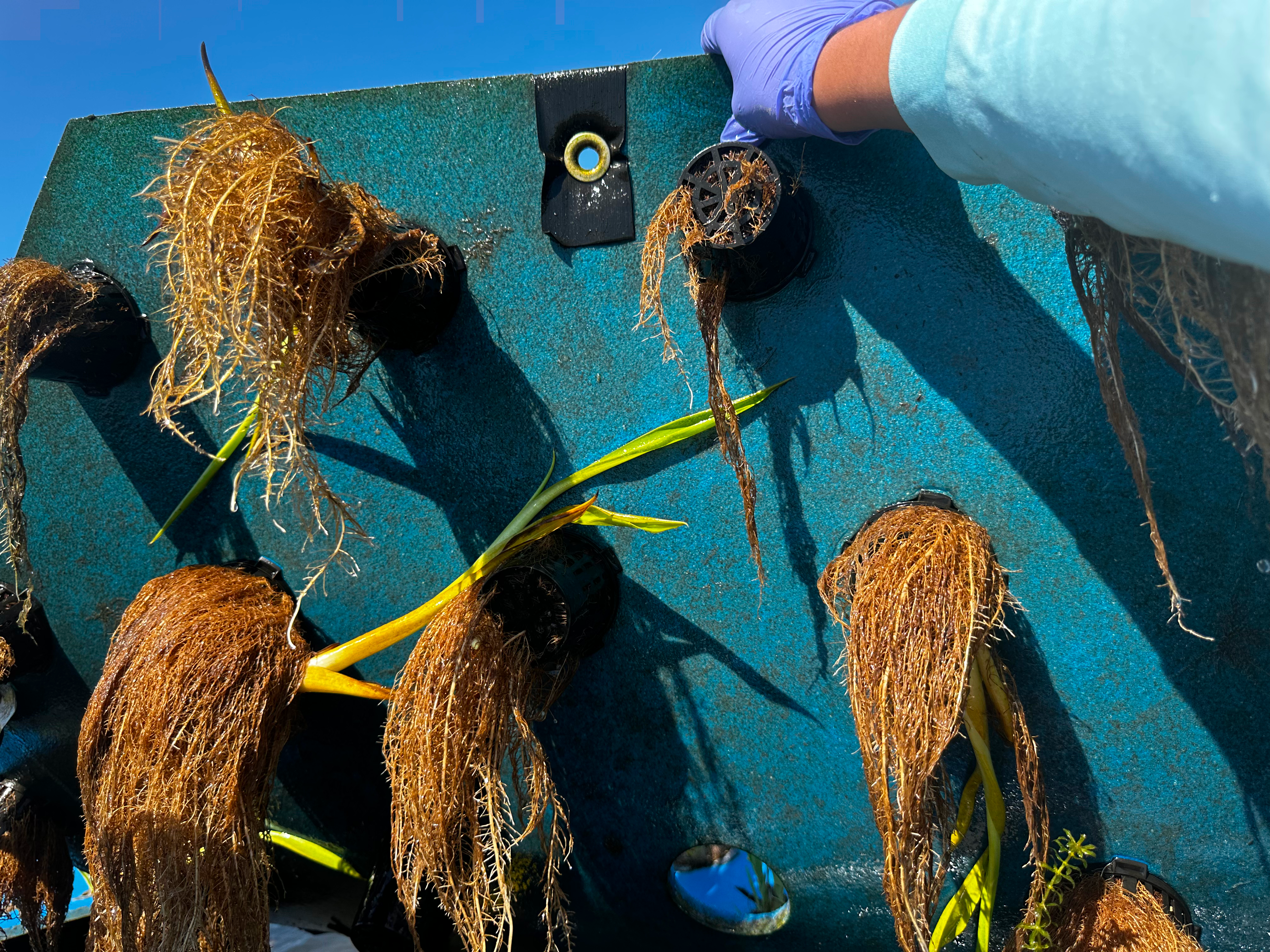
Floating Wetland systems are a form of green, (or non grey) infrastructure that aids in improving the water quality of stormwater ponds. A floating wetland consists of buoyant materials that form a platform or mat, and a collection of plants that are typically anchored to the mat with a pot or surface of material that the plants root into and grow. These platforms resemble tiny islands and sit on the surface of the pond. In practice, a floating wetland system helps to decrease the concentration of pollution as the wetland plants feed off pollutants such as nutrients or heavy metals and break down other forms of pollutants that enter the pond through runoff. Floating wetlands can be uniquely useful because features of their design can be changed to fit the location. This can be done through the inclusion of local plants, scaling the size of the system to the pond, and with the freedom to construct or move wetlands to key areas of a pond with anchors.

Floating Wetland Research at USF
In collaboration with researchers from the University of Florida, Civil and environmental engineers at USF are conducting research on floating wetland systems and exploring the possible benefits of floating wetland systems to stormwater systems in the University Area. By installing test systems in Aaran's pond this project is interested in monitoring the effect that different plants in combination with special potting materials have on nutrient removal. Of particular note is the exploration of biochar within these systems. Biochar is a porous carbon-based material formed from burning organic material like plants in a low oxygen environment. This material has been of key interest for its high adsorption property that can aid floating wetland systems further in nutrient removal.
